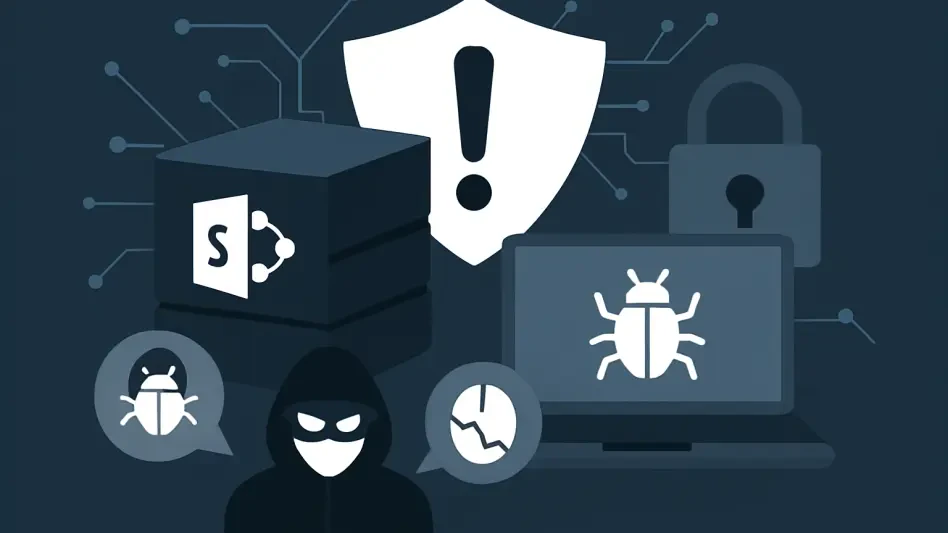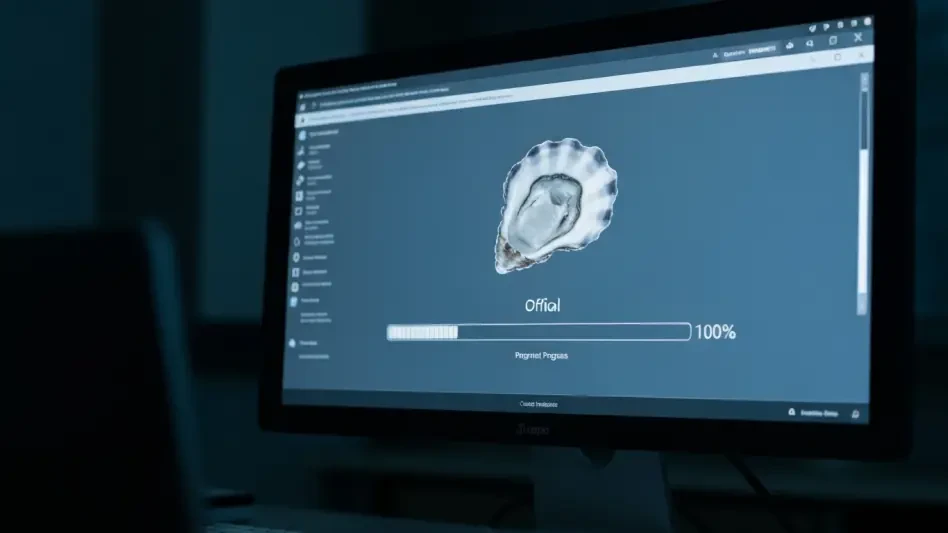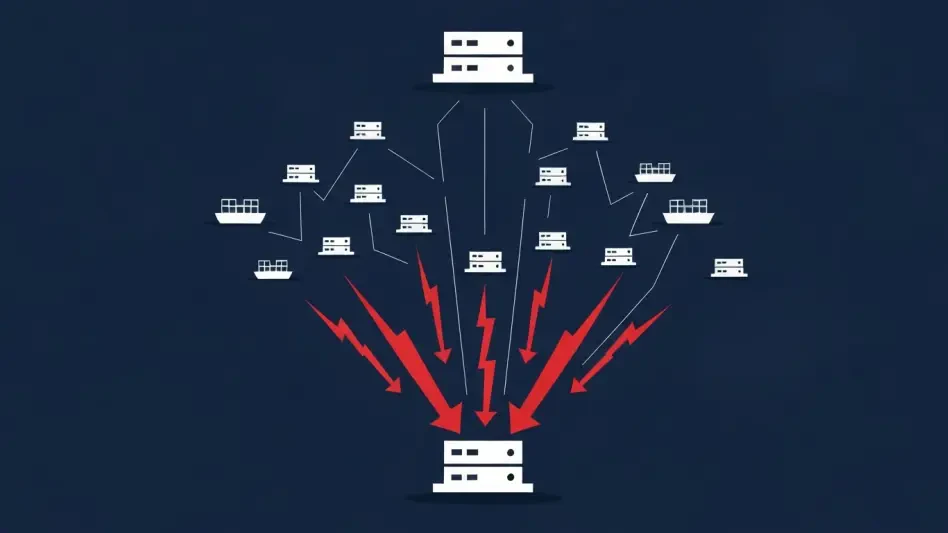SharePoint Server’s newly identified security vulnerabilities have forced the tech industry into swift reaction mode. The series known as ToolShell has been actively exploited, posing significant threats to on-premises SharePoint installations. These vulnerabilities, marked as CVE-2025-53770 and CVE-2025-53771, allow attackers to bypass critical security layers. While online SharePoint services remain unaffected, organizations using other versions must act promptly to patch their systems. This scenario underscores the persistent challenge businesses face in defending against evolving cyber threats, making immediate action and awareness critically necessary.
Nature of the ToolShell Vulnerabilities
Critical Flaws Discovered
The ToolShell vulnerabilities in Microsoft SharePoint Servers are a stark reminder of the current cybersecurity landscape’s complexity and danger. The first notable vulnerability, CVE-2025-53770, is a remote code execution flaw. This severe defect allows unauthorized attackers to execute arbitrary code on compromised SharePoint servers. By doing so, they can infiltrate networks, potentially installing stealthy webshells or exfiltrating sensitive information. Such access poses a grave risk as adversaries may further maneuver through enterprise networks, affecting various interconnected services including Microsoft Office applications and storage solutions like OneDrive.
Authentication Bypass and Broader Implications
Alongside the remote code flaw, CVE-2025-53771 further exacerbates concerns by offering an avenue for servers to be spoofed. This vulnerability undermines typically robust authentication mechanisms like multi-factor authentication (MFA) and single sign-on (SSO). By circumventing these security measures, cybercriminals gain broader access, infiltrating other systems without detection. The combination of these exploitable points enables skilled hackers to merge new and old vulnerabilities, painting a complex threat landscape. This strategy of chaining vulnerabilities presents an increasing challenge to cybersecurity teams tasked with keeping systems secure, emphasizing the need for full-spectrum defenses and diligent security practices.
The Global Impact and Stakeholder Response
Widespread Exploitation Patterns
The impact of these newly uncovered vulnerabilities is not confined to a single geographic locale but rather spans globally. Prominent attacks have notably occurred in the United States, which has witnessed the highest concentration of incidents, accounting for over 13% of detected cases. European countries like Germany and Italy are also significantly affected, demonstrating the wide-reaching nature of these cyber threats. In a salient example, China-aligned APT groups like LuckyMouse have deployed ToolShell to launch sophisticated campaigns against governmental and international entities. These advanced actors have ingeniously utilized such vulnerabilities to conduct strategic operations, reflecting a broader trend of state-backed cyber espionage activities that carry geopolitical implications.
Microsoft’s Corrective Measures
In response to the growing threat, Microsoft has rolled out robust updates aimed at securing affected SharePoint environments. Detailed patches have been released, mandating organizations to implement immediate corrective measures to curb exploitation risks. For instance, updates like KB5002768 for SharePoint Subscription Edition emphasize the importance of enabling comprehensive security settings, such as Antimalware Scan Interface, in full mode to detect and counter malicious activities before damage occurs. Additionally, Microsoft has recommended rotating ASP.NET machine keys as a preventive norm to further cement protective strategies. This comprehensive approach reflects a proactive effort to not only remedy current issues but also fortify defenses against future breaches, encouraging enterprises to prioritize regular system updates and cyber hygiene practices.
Strategic Mitigation and Future Considerations
Advanced Monitoring Techniques
Organizations looking to strengthen their cybersecurity postures must consider adopting advanced monitoring capabilities. Utilizing Microsoft 365 Defender’s hunting queries is a recommended approach to surveil potential vulnerabilities. These tools offer the ability to scrutinize file and process events linked to the generation of malicious webshells and suspicious command executions. For systems that remain unpatched, isolating them from the internet or redirecting web traffic through authenticated proxies may mitigate exposure to external cyber threats. These proactive steps are pivotal in ensuring that even if an initial breach occurs, its impact can be promptly contained and managed.
Preparing for Tomorrow’s Threats
Anticipating and preparing for evolving threats is now indispensable for cyber resilience. The ToolShell incident underscores the necessity for organizations to adopt flexible and dynamic security strategies. Continuous education and awareness programs must be prioritized within enterprises to build a culture of vigilance and prompt reaction in the face of new threats. Companies should invest in emerging technologies like AI-driven threat detection and behavioral analytics to bolster their defensive capabilities. The traditional reliance on patch management and perimeter defenses is no longer sufficient; multi-layered security frameworks are needed to navigate the complexities of contemporary threat landscapes, promising a safer digital environment.
Adopting Vigilant Cyber Defense Measures
The tech industry is currently in a state of heightened response due to newly discovered security vulnerabilities in SharePoint Server. Referred to as ToolShell, this series of vulnerabilities presents a significant security threat to on-premises SharePoint installations. These vulnerabilities, identified as CVE-2025-53770 and CVE-2025-53771, enable malicious actors to bypass essential security measures, posing a substantial risk. Fortunately, the online SharePoint services remain unaffected by these issues. However, organizations utilizing other versions need to take immediate action to update and secure their systems. This situation highlights the continuous challenge businesses face in protecting themselves against constantly evolving cyber threats. It’s critical for organizations to remain vigilant and act swiftly to safeguard their data and networks. Immediate action is crucial in mitigating these threats, illustrating the ever-present need for awareness and quick response to such security challenges in the digital landscape.








